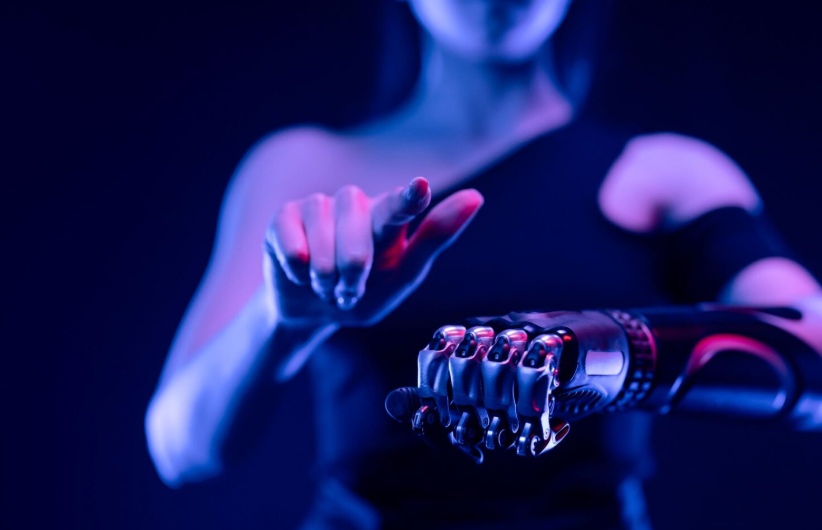
While cultural debates dominate headlines, a quieter revolution is underway – one that could reshape the very definition of humanity itself. Advances in biotechnology, neural interfaces, and synthetic augmentation are no longer speculative fiction; they are emerging realities – not unlike the once – distant visions portrayed in The Six Million Dollar Man, The Bionic Woman, or Universal Soldier. From sophisticated prosthetics and gene editing to the earliest stages of full biological; synthetic integration, human enhancement is moving from isolated experiments to structured ecosystems. Amidst this transformation, societies face an urgent question: will we shape this future responsibly, or let fragmented progress create deeper inequalities. The synthetic horizon is approaching: faster, broader, and more inevitable than most realise.
Japan’s Human Augmentation Consortium
In December 2024, a coalition of six major Japanese corporations – Toyota, NTT Docomo, TOPPAN, Mizuno, Mitsubishi Research Institute, and H2L – launched the Human Augmentation Consortium, signalling a decisive leap toward a synthetic-enhanced society. The consortium’s mission is clear: to develop technologies that enhance human senses, mobility, and presence through networked platforms, while promoting international standards for augmentation devices, applications, and ecosystems. Key initiatives include transmitting proprioception data across networks (“FEEL TECH”), integrating augmented mobility into education and tourism sectors, and creating remote workforces with virtually extended capabilities. Far from treating human enhancement as speculative or niche, Japan is embedding augmentation into its societal infrastructure – aiming to tackle challenges like aging populations, labour shortages, and cultural preservation. This strategic, cross-sector collaboration illustrates that human augmentation is no longer isolated innovation – it is becoming a national industrial agenda.
The Synthetic Merge: Augmentation as the New Baseline
As society debates surface – level identity shifts, a much deeper transformation is unfolding beneath – the merger of biology and technology at the functional level. Synthetic augmentation is no longer a theoretical future. It is materialising today, across fields as diverse as healthcare, industrial labour, sensory enhancement, and cognitive expansion.
Prosthetics, Sensory Expansion, and Bio-Interfaces. Modern augmentation begins with the body – echoing early visions of enhanced humanity seen in characters like RoboCop or The Bionic Woman, where technology seamlessly amplified biological abilities. New generations of smart prosthetics, developed by organisations like DARPA and Össur, now allow users to control artificial limbs through thought alone – with sensory feedback loops restoring touch, grip, and temperature sensations. In the sensory domain, companies like Pixium Vision and Second Sight Medical are engineering bionic retinal implants, enabling blind individuals to perceive basic visual fields again – a biological-digital hybridisation of perception itself.
Meanwhile, brain-computer interfaces (BCIs) are shifting from hard, metallic designs toward soft silicone-based implants, pioneered by BrainGate and Blackrock Neurotech. These flexible neural interfaces promise long-term, biocompatible integration with the brain, setting the stage for direct cognitive augmentation – the ability to control external systems, communicate, and process information without physical movement. The merger is not isolated to laboratories or defence research. Companies like Walletmor are already offering silicone-coated subdermal implants for everyday functionality – enabling users to make payments, unlock doors, and share identification seamlessly through embedded microchips.
Genetic Editing and Biological Expansion. Beyond mechanical interfaces, augmentation now reaches into the genome itself. Companies like Verve Therapeutics have moved CRISPR-based genetic editing into live clinical use, altering genes inside the human body to reduce cardiovascular risks – permanent biological enhancements. Meanwhile, pioneering research into telomere extension and chromosome stabilisation suggests potential pathways to slow, or even reverse, biological aging processes. Rather than simply healing disease, genetic technologies are increasingly aimed at enhancing baseline biological performance – resilience, cognition, and longevity.
Nanotechnology and Synthetic Integration. At even smaller scales, nanotechnology is entering biological systems. Experimental nanobots, capable of targeted drug delivery or cellular repair, are moving toward human trials. The long-term trajectory envisions nanotechnology as internal infrastructure – maintaining health, repairing tissue damage, and potentially enabling programmable biological functions beyond natural evolutionary limits. These integrations are still early-stage but unmistakably directional: humans are engineering themselves, from the cellular to the sensory level, with increasing precision.
The Synthetic Trend: Expansion, Not Replacement. Critically, this synthetic trend does not aim to replace biology, but to expand it.Wearable technology that monitors vital signs, cochlear implants that restore hearing beyond natural frequencies, and industrial exoskeletons that amplify human strength are all early expressions of this expansionist horizon.
Looking forward, the landscape becomes even more modernised, such as: brain-computer interfaces enabling thought-driven communication and machine control. Longevity hacking attempting to reprogram human aging itself through genetic, molecular, and biomechanical strategies. Each advancement brings humans closer to a hybrid existence – part organic, part synthetic – not through replacement, but by layering new capabilities onto biological foundations.
Ethics and Implications: Shaping the Synthetic Future
As the synthetic horizon advances, so too does the complexity of its ethical landscape. Human augmentation is no longer a question of technological possibility – it is a societal inflection point, raising urgent questions about ownership, access, governance, and responsibility. Drawing from insights by Shravishtha Ajaykumar (“Biohacking and regulations: The evolving landscape of human enhancement”; Observer Research Foundation, 2023), the emerging ethical challenges are multidimensional:
Consent and Ownership. As synthetic implants, bio-interfaces, and genetic modifications become integrated with the human body, traditional notions of bodily autonomy are tested. Who truly owns augmented biological assets – the individual or the manufacturer? Existing legal frameworks offer little clarity.
Access Equality. As coordinated safeguards truly the requirement, Ajaykumar suggests, synthetic enhancements could potentially deepen global inequalities – creating an augmented few and a biologically natural others. Ajaykumar’s work highlights that lack of regulation risks amplifying disparities, especially where access to biohacking tools or augmentation therapies is restricted by wealth or geography.
Data Privacy and Biosecurity. Augmented systems generate continuous biological and behavioural data streams. Yet global privacy regulations, like GDPR and HIPAA, are not designed for bodies that double as data networks. Simultaneously, DIY biohacking – often operating outside formal research standards – introduces biosecurity risks, from unsafe genetic experiments to potential bioterrorism concerns.
Regulatory Gaps and the DIY Frontier. As Ajaykumar notes, the absence of comprehensive biohacking regulation globally leaves critical vulnerabilities. While agencies like the FBI’s Biological Countermeasures Unit engage with DIY communities in the U.S., other regions remain exposed to unregulated augmentation practices.
The question is no longer whether augmentation will reshape humanity. It is who will eventually govern that transformation – and the terms put in place.




